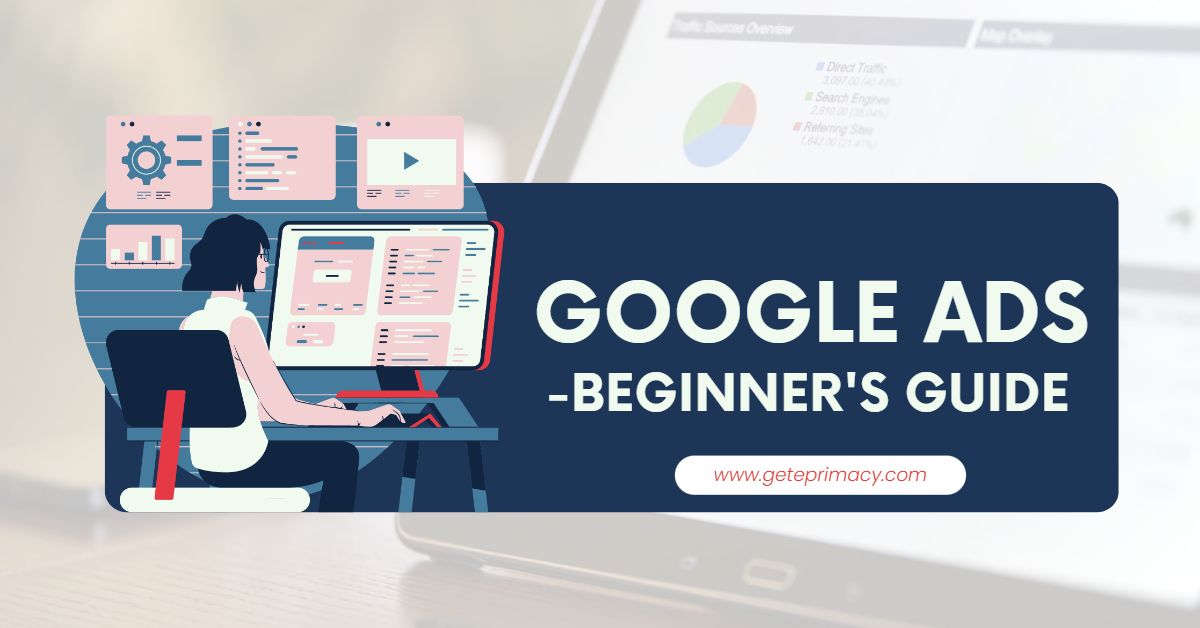Google Ads, formerly known as Google AdWords, is one of the most powerful digital marketing tools available to businesses today. With over 246 million unique visitors to Google sites each month, Google Ads can help businesses of all sizes increase their online visibility, attract new customers, and grow their business.
With the ability to target specific audiences and measure the effectiveness of your campaigns, Google Ads can help you reach your marketing goals and grow your business. However, creating a successful Google Ads campaign requires a solid understanding of the platform and the strategies that work best. In this blog, we’ll explore a step-by-step guide to creating a Google Ads campaign and share tips for making the most of your first ad campaign. Whether you’re new to Google Ads or looking to improve your existing campaigns, this guide will provide valuable insights to help you succeed.
To understand it better, let us first look at the key benefits of Google Ads below.
Benefits of Google Ads
- Reach a large audience: Google Ads can help businesses reach a large audience of potential customers who are actively searching for their products or services on Google.
- Target specific audiences: With Google Ads, businesses can target specific audiences based on factors like demographics, interests, behaviors, and location.
- Control Ad spend: Google Ads allows businesses to set a daily budget and bid on keywords, giving them control over their ad spend and ensuring they don’t overspend.
- Measure and track results: Google Ads provides detailed analytics and reporting tools that allow businesses to track their ad performance and measure the return on investment (ROI) of their campaigns.
- Improve brand awareness: Google Ads can help businesses increase their brand awareness and visibility by displaying their ads at the top of Google search results pages.
- Generate leads and sales: Google Ads can help businesses generate leads and sales by driving traffic to their website and encouraging visitors to take action, such as filling out a form or making a purchase.
- Increase website traffic: Google Ads can help businesses increase their website traffic and improve their search engine rankings by driving more clicks and visits to their website.
- Flexibility and scalability: Google Ads is a flexible and scalable advertising platform that allows businesses to adjust their campaigns as needed and increase their ad spend as they grow.
Overall, Google Ads is a powerful advertising platform that can help businesses of all sizes achieve their marketing goals and grow their business. With its targeting capabilities, flexibility, and ability to drive traffic and sales, Google Ads is an essential tool for businesses looking to increase their online visibility and reach new customers.
Step-by-Step Guide to Google Ads
OPTION 1: Self Set-up
If you’re new to Google Ads and want to create your first campaign, this guide will help you get started. By following this guide, you will be able to create an effective Google Ads campaign that can help your business achieve its marketing goals and reach new customers.
Step 1: Create a Google Ads Account
To create a Google Ads account, go to the Google Ads website and click on the “Start Now” button. You’ll be prompted to sign in with your Google account or create a new one if you don’t have one already. Once you’re signed in, you’ll be taken to the Google Ads dashboard.
Step 2: Set Your Campaign Goals
The next step is to set your campaign goals. What do you want to achieve with your Google Ads campaign? Do you want to drive more traffic to your website, generate more leads, or increase sales? Defining your campaign goals will help you create a more effective campaign and measure its success.
Step 3: Choose Your Campaign Type
Google Ads offers several types of campaigns, including Search, Display, Video, Shopping, and App campaigns. Choose the campaign type that aligns with your campaign goals and audience.
Step 4: Define Your Target Audience
The success of your Google Ads campaign depends on your ability to target the right audience. Define your target audience based on factors like age, gender, location, interests, and behaviors. This will help you create more targeted ads that are more likely to resonate with your audience.
Step 5: Choose Your Keywords
Keywords are the words and phrases that people use to search for products or services on Google. Choose relevant keywords that are related to your business and campaign goals. Use keyword research tools to find the most popular keywords and phrases for your industry.
Step 6: Create Your Ad Groups and Ads
Once you’ve chosen your keywords, create your ad groups and ads. Ad groups are groups of keywords that are relevant to a specific ad. Create multiple ads for each ad group and test them to see which ones perform best.
Step 7: Set Your Budget and Bidding Strategy
Set your budget and bidding strategy for your Google Ads campaign. Choose between manual bidding or automated bidding strategies. Manual bidding allows you to set your bids for each keyword, while automated bidding uses machine learning to adjust your bids based on your campaign goals.
Step 8: Launch Your Campaign
Once you’ve created your campaign, ad groups, and ads, it’s time to launch your campaign. Review your campaign settings, keywords, and ads to make sure everything is set up correctly. Once you’re ready, click the “Launch Campaign” button to start running your ads.
Step 9: Monitor and Optimize Your Campaign
The final step is to monitor and optimize your campaign regularly. Use Google Ads reporting tools to track your campaign’s performance and make adjustments as needed. Optimize your ads by testing different ad copy, keywords, and targeting options to improve your campaign’s effectiveness.
OPTION 2: Get In Touch with ePrimacy Marketing Solutions
If you are keen on reaching out to a big pool of customers via Google, without having to go through the tedious 9-step process mentioned above, you can follow the below mentioned 3-step process and get your Google Ads campaign up and running.
Step 1: Contact Us
To ease the pressure of planning your first campaign, we can help you out. By taking advantage of the powerful targeting capabilities and advanced features of Google Ads, we can take your business to the next level and help you achieve better success in the competitive world of digital marketing.
Step 2: Give us Brief
With our team of experts, we will be able to create more advanced campaigns that drive even better results for your business. All we need from you is a detailed brief regarding your requirements and objectives for the campaign to get started.
Step 3: Campaign is Ready
Get your customised campaign up and running with the ePrimacy Marketing Solutions, without having to struggle with multiple steps and endless hassle of setting up.
Key Tips for a Successful Campaign
Here are some tips for making the most of your first Google Ads Campaign
- Set clear goals: Before you start spending money on advertising, define your goals and how you will measure success. This will help you stay focused and allocate your budget more effectively.
- Target the right audience: Be sure to target your advertising to the people who are most likely to be interested in your product or service. Use audience targeting features such as location, demographics, interests, and behavior to refine your audience.
- Choose the right ad format: Choose the ad format that best suits your goals and your target audience. Text ads, display ads, and video ads all have their strengths and weaknesses, so choose the one that aligns with your goals and budget.
- Use negative keywords: Negative keywords can help you avoid wasting money on clicks that are unlikely to convert. By adding negative keywords to your campaigns, you can prevent your ads from showing to people who are searching for irrelevant or unrelated topics.
- Test and optimize your ads: Continuously test and optimize your ads to improve their performance. Try different headlines, descriptions, and images to see what resonates best with your target audience. Use A/B testing to compare different versions of your ads and determine which ones are most effective.
By following these tips, you can achieve better results from your campaigns. Remember to monitor your campaigns regularly and adjust your strategy as needed to ensure you are getting the best possible return on investment.
Conclusion
In conclusion, Google Ads can help businesses reach their target audience and achieve their marketing goals. Creating your first Google Ads campaign can seem daunting at first, but with this step-by-step guide, you can easily create an effective campaign that drives results. Remember to research your target audience, select relevant keywords, create compelling ad copy, and track your campaign’s performance to optimize your results.




